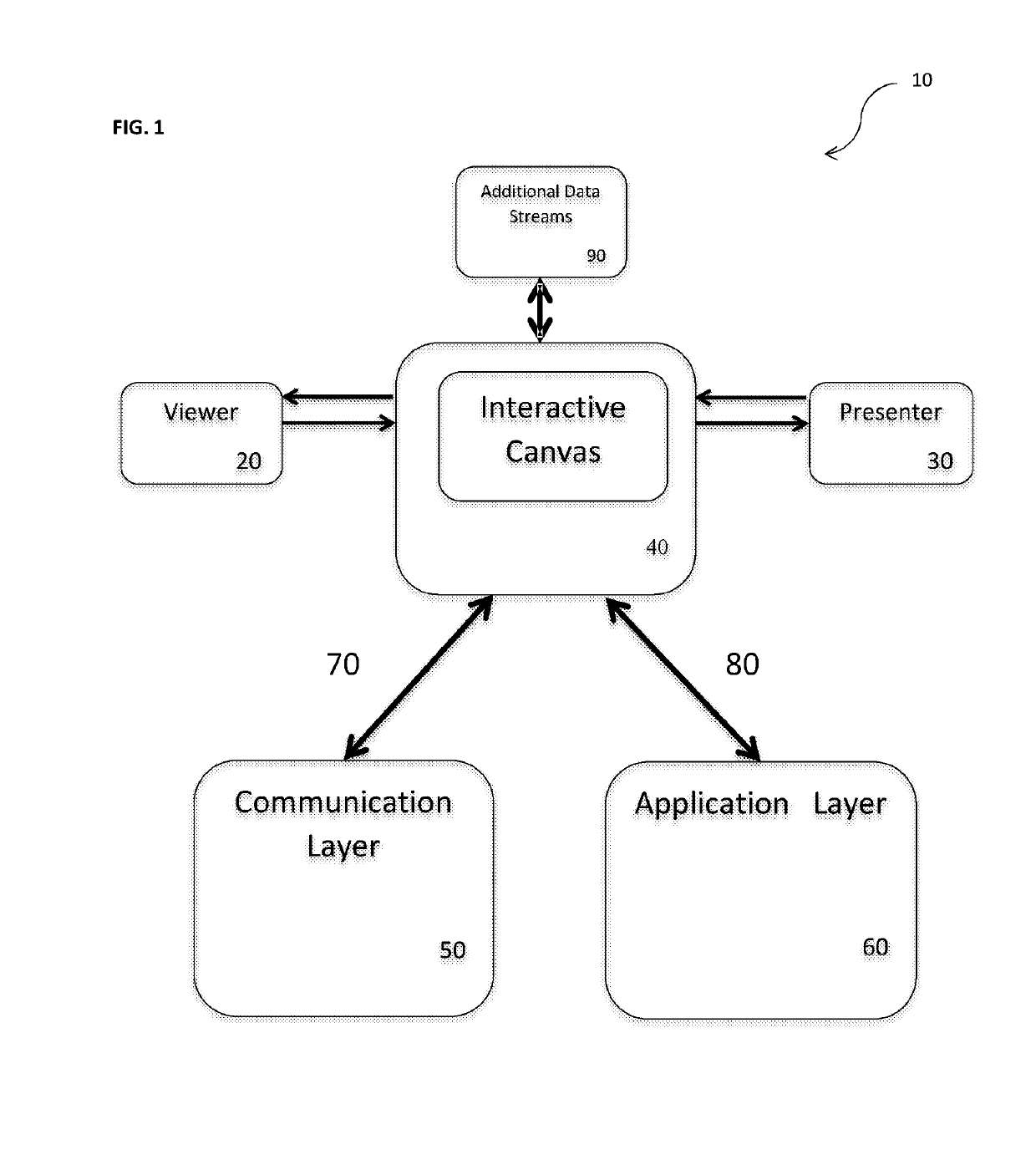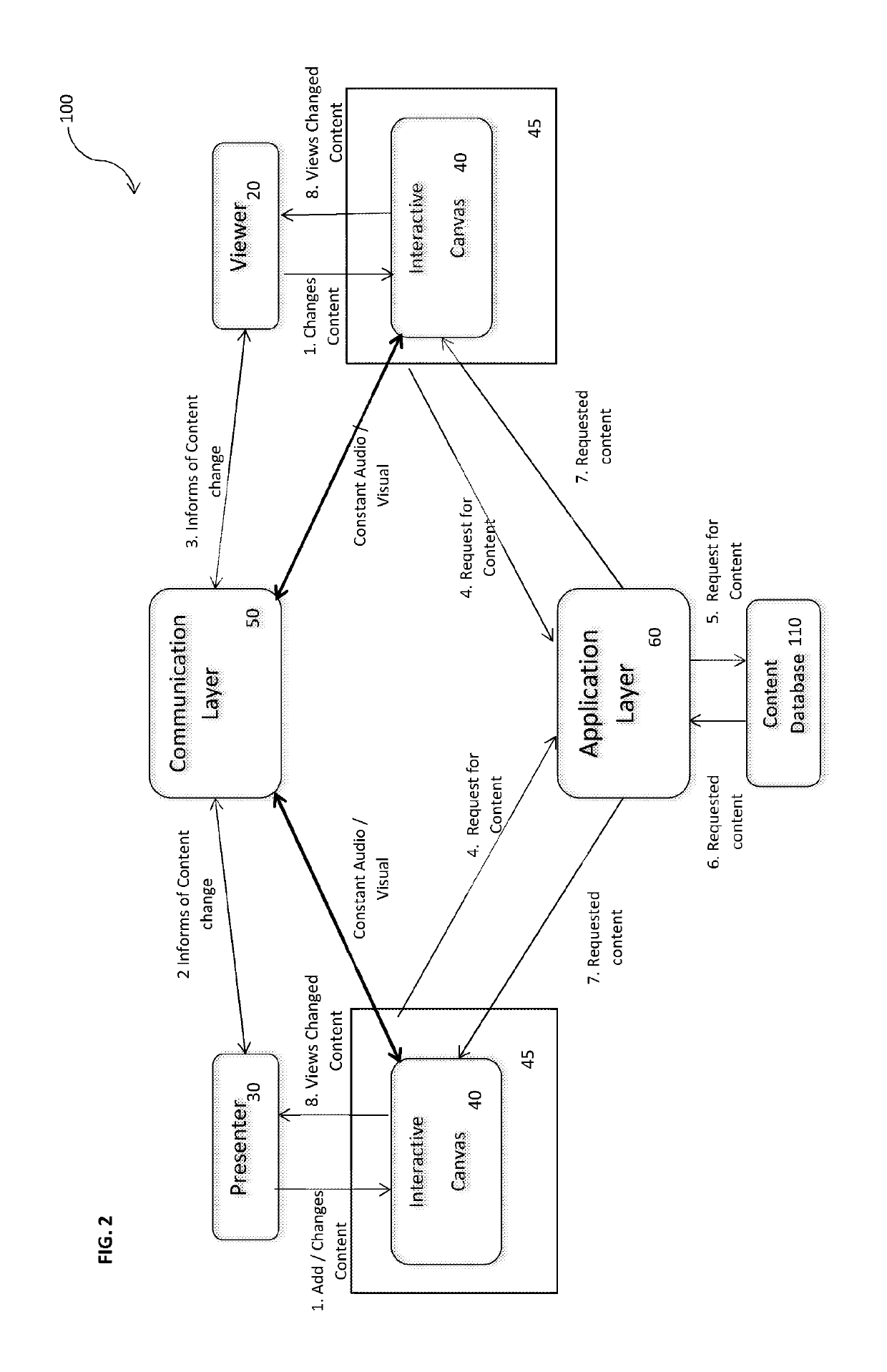Interactive display synchronisation
a technology of interactive display and synchronisation, which is applied in the field of interactive display synchronisation, can solve the problems of significant degradation in the amount of information being provided to participants, the inability of presenters to always rely on the bandwidth of participants, and the degradation of internet connection, so as to improve the time taken to build new interactive functionality, improve the control of a presentation, and reduce latency
- Summary
- Abstract
- Description
- Claims
- Application Information
AI Technical Summary
Benefits of technology
Problems solved by technology
Method used
Image
Examples
Embodiment Construction
[0062]In one example implementation, the system uses WebRTC (see https: / / webrtc.org / retrieved 9 May 2016) to provide real-time communications across the internet or other network. The system provides a collaborative environment for enabling presentations (e.g. for products and services). The system may also enable remote transactions to take place and be recorded, audited or retrieved. The system integrates voice over IP (VoIP) technology including a presentation canvas, which provides assets or digital works to improve a presentation or interactive call. Analysis, feedback and meta-data describing a presentation may be captured. Digital works may be presented along with audio and / or video. These digital works may be in different forms including: documents, images, film, and interactive multi-media, for example.
[0063]WebRTC provides internet browsers with standardised real-time communications (RTC) capabilities. This may be combined with JavaScript APIs and HTML5 code, for example. ...
PUM
 Login to View More
Login to View More Abstract
Description
Claims
Application Information
 Login to View More
Login to View More - R&D
- Intellectual Property
- Life Sciences
- Materials
- Tech Scout
- Unparalleled Data Quality
- Higher Quality Content
- 60% Fewer Hallucinations
Browse by: Latest US Patents, China's latest patents, Technical Efficacy Thesaurus, Application Domain, Technology Topic, Popular Technical Reports.
© 2025 PatSnap. All rights reserved.Legal|Privacy policy|Modern Slavery Act Transparency Statement|Sitemap|About US| Contact US: help@patsnap.com



